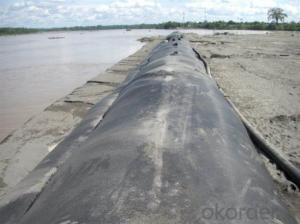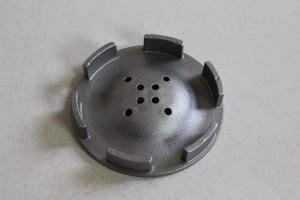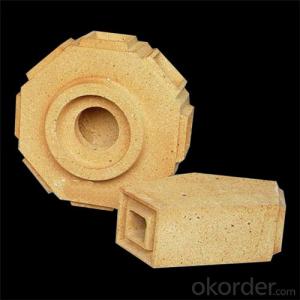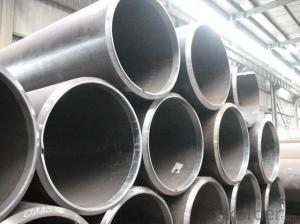Stainless Steel Double Boiler
Stainless Steel Double Boiler Related Searches
Best Paint For Stainless Steel Paint For Galvanized Steel Steel Frames For Furniture Self Tapping Screws For Steel Surface Grinding Wheels For Hardened Steel Hole Saw For Stainless Steel Paint For Stainless Steel Stainless Steel For Bbq Step Bit For Stainless Steel Sponge For Stainless SteelHot Searches
Cheap High Tea Sets For Sale Portable Led Signs For Sale Stone Hot Water Bottles For Sale Large Led Screens For Sale 1/4 Aluminum Plate For Sale H4 Led Headlight Bulbs For Sale Air Pump For Aquarium Price Inverter Size For Solar System Solar Thermal Collectors For Sale Used Finger Joint Machine For Sale Aluminum Dock Plate For Sale Aluminum Plate For Sale Near Me Solar Chips For Sale Solar Business For Sale Solar Controllers For Sale Pipe Staging For Sale Aluminum Stock For Sale Near Me Used Electrical Wire For Sale 6 3 Electrical Wire For Sale Steel Mesh Panels For SaleStainless Steel Double Boiler Supplier & Manufacturer from China
Okorder.com is a professional Stainless Steel Double Boiler supplier & manufacturer, offers integrated one-stop services including real-time quoting and online cargo tracking. We are funded by CNBM Group, a Fortune 500 enterprise and the largest Stainless Steel Double Boiler firm in China.Hot Products
FAQ
- Indeed, high-pressure applications find stainless steel pipes to be fitting. Recognized for their remarkable durability and ability to resist corrosion, stainless steel emerges as a material ideally suited for managing fluids or gases under high pressure. It maintains its shape and integrity even when subjected to high pressures, guaranteeing system safety and reliability by averting deformities or leaks. Furthermore, the smooth internal surface of stainless steel pipes reduces flow resistance and impedes the accumulation of debris or contaminants, thereby heightening their suitability for high-pressure applications.
- The external protection used for stainless steel pipes can vary, but it typically involves the application of coatings or paints that provide a barrier against corrosion and other environmental factors.
- To prevent blockages in stainless steel pipes, there are several measures you can take: 1. Regular cleaning: Clean the pipes on a regular basis to remove any accumulated debris or residue. This can be done using various cleaning methods such as mechanical cleaning tools or chemical cleaning solutions that are safe for stainless steel. 2. Proper disposal of waste: Ensure that you dispose of waste materials properly, avoiding dumping substances that can cause blockages, such as grease, oil, food scraps, or other solids. Use appropriate waste disposal systems or filters to trap these substances before they enter the pipes. 3. Avoid corrosive substances: Stainless steel pipes are resilient to corrosion, but exposure to certain highly corrosive substances can cause damage and blockages. Avoid using or disposing of chemicals or substances that are known to corrode stainless steel pipes. 4. Regular inspections: Conduct regular inspections of the pipes to identify any signs of blockages or potential issues. This can help in detecting problems early on and taking necessary preventive measures. 5. Proper installation: Ensure that the pipes are installed correctly, with proper alignment, support, and connections. This will help prevent the formation of blockages due to misaligned or poorly connected pipes. 6. Use strainers or filters: Install strainers or filters at the entry points of the pipes to catch any large particles or debris that can potentially block the pipes. Regularly clean or replace these strainers to maintain their effectiveness. 7. Avoid high-temperature buildup: Excessive heat can cause substances to solidify or congeal, leading to blockages. Avoid allowing substances to cool and solidify in the pipes by maintaining a suitable temperature and preventing sudden temperature changes. 8. Regular maintenance: Implement a regular maintenance schedule to keep the pipes in optimal condition. This can include activities such as flushing the pipes with hot water or using specialized cleaning solutions to remove any buildup or residue. By following these preventive measures, you can significantly reduce the chances of blockages in stainless steel pipes, ensuring their long-term functionality and minimizing the need for costly repairs or replacements.
- Yes, stainless steel pipes are suitable for solar power plants. Stainless steel is highly resistant to corrosion, withstands high temperatures, and has excellent mechanical properties, making it an ideal choice for transporting and distributing water, steam, and other fluids in solar power plants. Additionally, stainless steel has a long lifespan and requires minimal maintenance, making it a cost-effective and reliable option for the harsh and demanding conditions of solar power plants.
- 904L and 316 stainless steel are both commonly used materials for pipes in various industries. The main difference between these two grades lies in their composition, properties, and applications. 1. Composition: - 904L stainless steel contains high levels of chromium, nickel, and molybdenum, along with copper. It has a higher alloy content compared to 316 stainless steel. - 316 stainless steel, also known as marine grade stainless steel, contains significant amounts of chromium, nickel, and molybdenum. However, it lacks copper in its composition. 2. Corrosion Resistance: - 904L stainless steel is highly resistant to corrosion, especially in aggressive environments such as seawater and acidic conditions. Its high chromium, nickel, and molybdenum content provide superior protection against pitting and crevice corrosion. - 316 stainless steel also offers excellent corrosion resistance, particularly in marine and chloride-rich environments. However, it is not as resistant to corrosion as 904L stainless steel. 3. Strength and Durability: - 904L stainless steel exhibits higher strength and durability compared to 316 stainless steel due to its higher nickel and molybdenum content. It can withstand higher pressures and temperatures, making it suitable for applications in extreme conditions. - 316 stainless steel possesses good strength and durability but is slightly lower in comparison to 904L stainless steel. 4. Applications: - 904L stainless steel pipes are commonly used in industries such as petrochemical, chemical processing, oil and gas, and marine applications. They are ideal for environments with high chloride levels and acidic conditions. - 316 stainless steel pipes are widely used in various industries, including food processing, pharmaceuticals, architecture, and marine applications. They are suitable for general-purpose applications where corrosion resistance is required but not as critical as in aggressive environments. In summary, while both 904L and 316 stainless steel pipes offer corrosion resistance, 904L stainless steel provides superior performance in aggressive environments due to its higher alloy content. However, 316 stainless steel is more commonly used in general-purpose applications where a high level of corrosion resistance is not essential.
- Yes, stainless steel pipes can be used for desalination systems. Stainless steel is highly resistant to corrosion and can withstand the harsh conditions involved in desalination processes, such as high salinity and the presence of chemicals. Its durability and resistance to corrosion make it an ideal material choice for transporting and distributing desalinated water.
- What does "stainless steel pipe" DN mean?
- DN is nominal diameter, nominal diameter (or nominal diameter), that is, all kinds of pipe and pipe accessories of universal caliber. The pipes of the same nominal diameter can be connected with each other and are interchangeable. It is not the outer diameter or inner diameter of the pipe in actual sense, although its value is close to or equal to the diameter of the pipe;
- The main difference between 304F and 316F stainless steel pipes lies in their composition and characteristics. 304F stainless steel is an austenitic stainless steel, which means it contains high levels of chromium and nickel. It is known for its excellent corrosion resistance, weldability, and formability. This makes it a popular choice for various applications, including pipes used in industries such as food processing, chemical processing, and construction. However, 304F stainless steel is not as resistant to chloride corrosion as 316F stainless steel. On the other hand, 316F stainless steel is also an austenitic stainless steel, but it contains higher levels of chromium, nickel, and molybdenum compared to 304F stainless steel. The addition of molybdenum provides enhanced corrosion resistance, particularly against chlorides and other aggressive chemicals. This makes 316F stainless steel pipes suitable for more demanding applications, such as marine environments, where exposure to saltwater and corrosive chemicals is common. In summary, the main difference between 304F and 316F stainless steel pipes is their corrosion resistance. While both are austenitic stainless steels, 316F stainless steel offers superior resistance to chloride corrosion, making it a better choice for applications where corrosion resistance is critical.














































